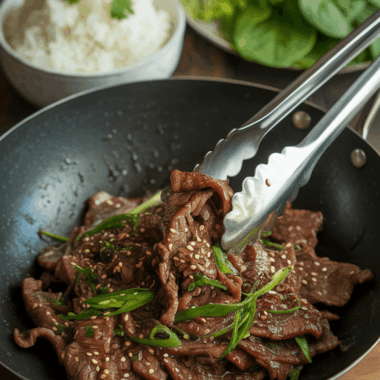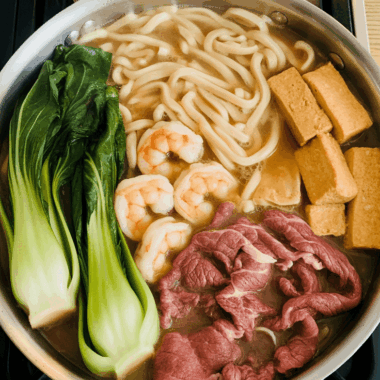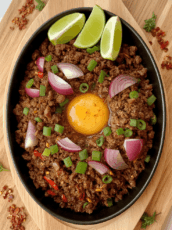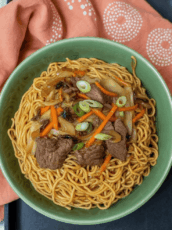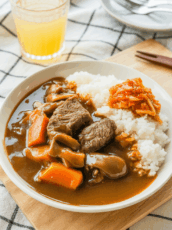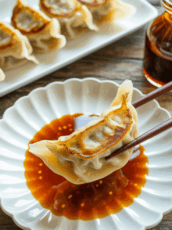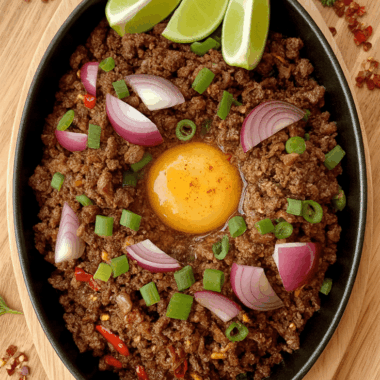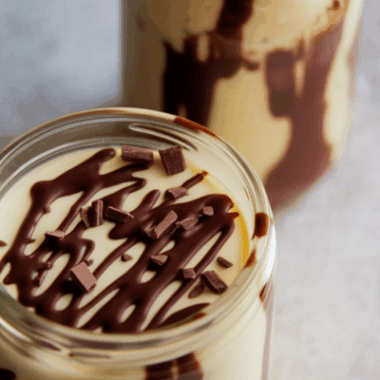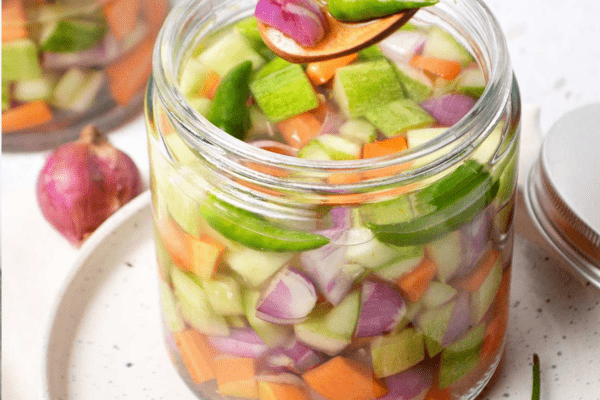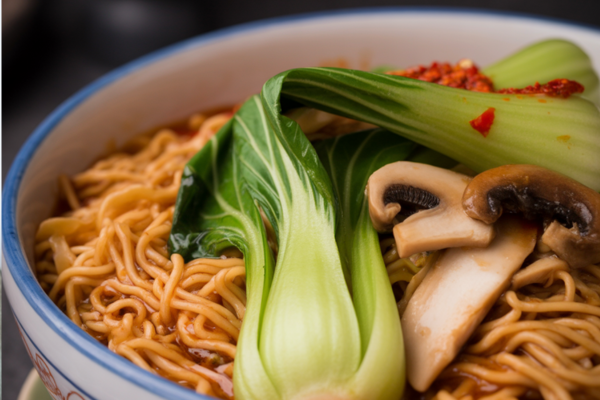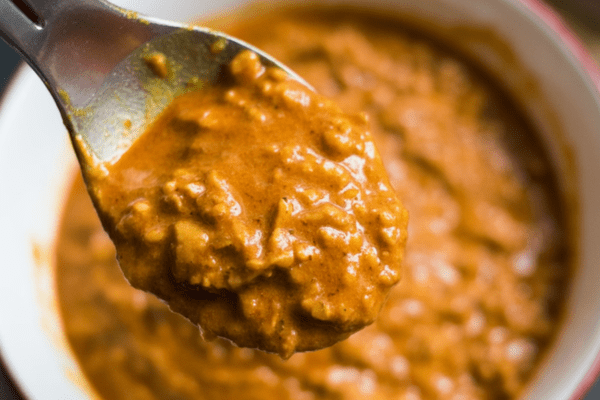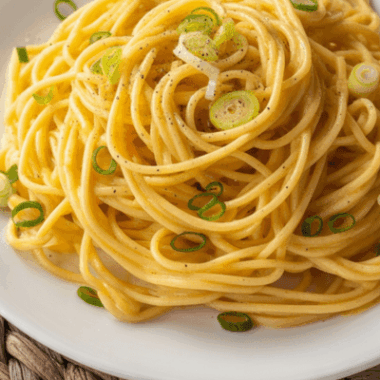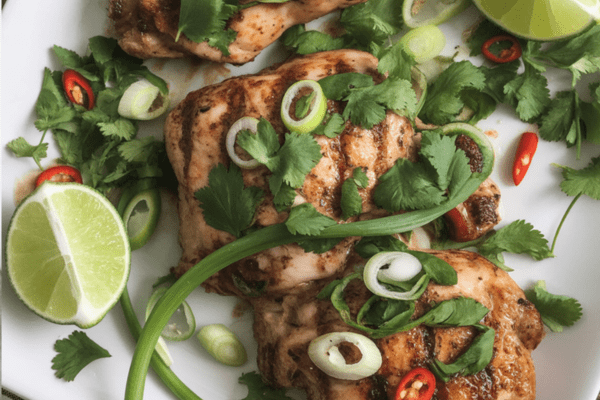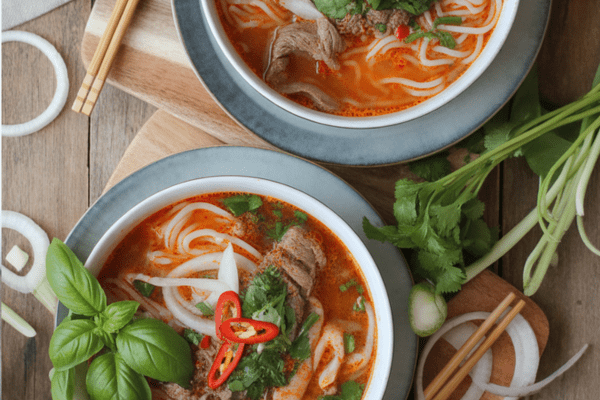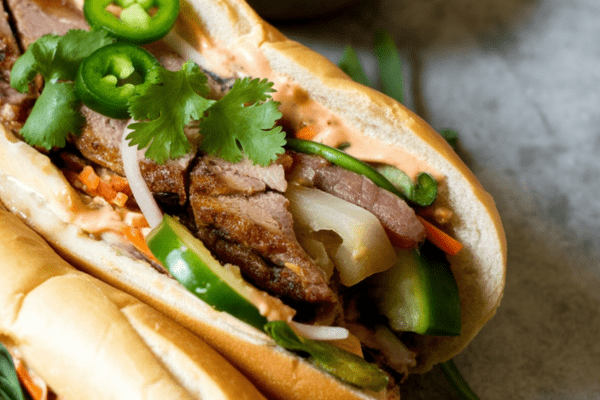These Chinese-style BBQ ribs are fall-apart tender, sticky in all the right ways, and packed with flavor. It’s the kind of dish that turns a regular dinner into a celebration—whether it’s a cozy holiday meal or just a weekend where you’re craving something special. And if there are leftovers (big if), they taste even better the next day.
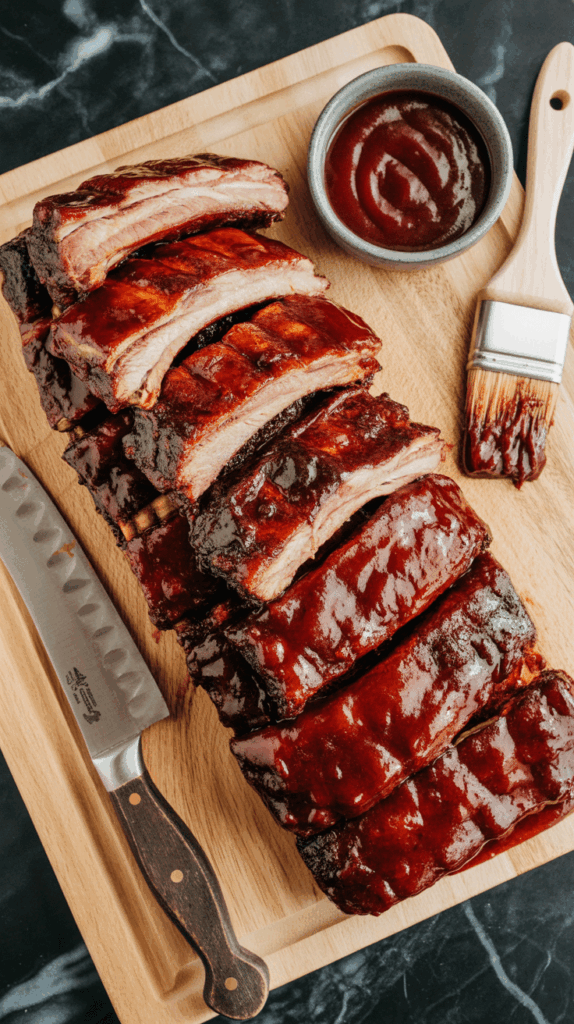
Why You’ll Want to Make This On Repeat
Okay, I’ll admit it—I grew up absolutely obsessed with char siu pork from the local Chinese takeaway spot. That sweet, savory glaze clinging to juicy slices of pork? Instant happiness. So, one year, around the holidays, I thought: why not use that flavor but go bigger—like, rib-sized?
These Chinese BBQ ribs take that same classic flavor and amp it up with ribs that are melt-in-your-mouth tender. Here’s why I love making this version:
- No specialty ingredients: Traditional char siu often uses maltose to get that iconic glossy finish. But maltose can be tricky to find. I swap it with honey, which gives you that same sticky glaze with zero fuss—and it’s probably already in your kitchen.
- Better texture, more flavor: Ribs are naturally more marbled than pork loin, which means more juiciness and way more flavor, especially around the bone. I’ve tried this recipe with both baby backs and St. Louis-style ribs, and both were gone within minutes of hitting the table.
- Hands-off roasting: Yes, it takes a couple of hours, but most of it is oven time. You season, wrap, and let the low heat do all the magic. Then a quick brush with glaze and back in the oven until sticky and irresistible.
This is my go-to for when guests are coming over, or even when it’s just a treat-yourself Sunday. The kind of dish that makes you want to eat with your hands, sauce on your face and all.
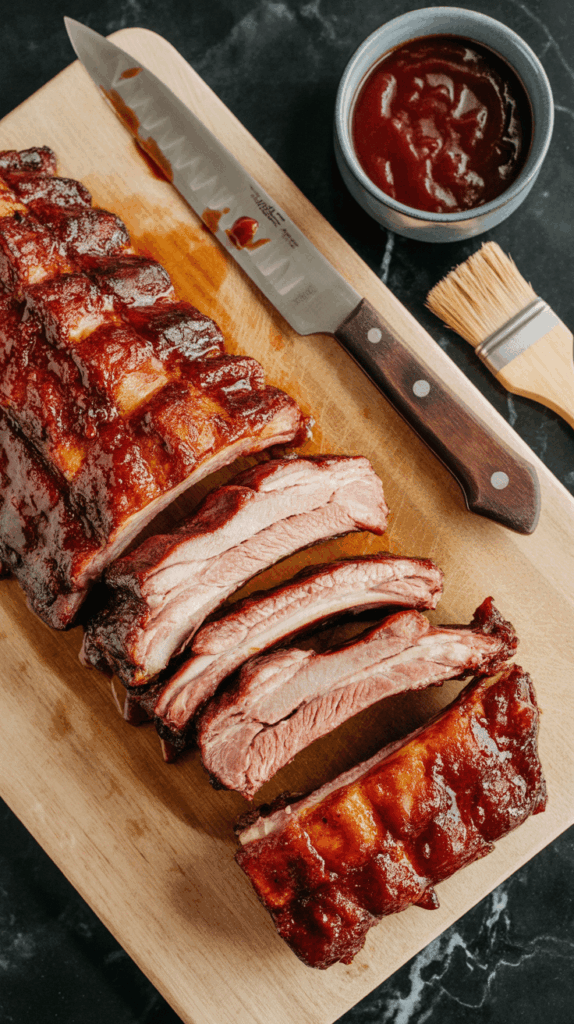
What You’ll Need
Just a short and sweet grocery list—and nothing you need to hunt down in specialty stores.
The Ribs
I usually grab St. Louis-style ribs because they’re a little meatier and have that nice balance of fat. But baby back ribs or even pork spare ribs work just fine. Just try to pick a rack that’s evenly marbled—not too lean or too fatty—for the best result.
The Rub & Sauce
For the dry rub, I keep it simple with salt, garlic powder, Chinese five spice, and a bit of sugar for balance.
The BBQ sauce is a mix of hoisin, soy sauce, honey, a touch of rice vinegar, and sometimes a splash of Shaoxing wine if I have it. Nothing fancy, just bold flavors.
Tip: If you like a deeper flavor, you can even stir a spoonful of fermented bean paste or oyster sauce into the mix. I’ve done it a few times, and it gives the sauce this umami punch that clings to the ribs beautifully.
How I Make Them (Without Marinating Overnight)
I’ve got no patience for overnight marinades—especially when I’m craving ribs today. This method skips the wait, but still loads in the flavor.
Here’s my process:
- Preheat and prep: I get the oven going low and slow—around 300°F (150°C). Then I pat the ribs dry and remove that silvery membrane on the back. It’s optional, but I swear it makes the ribs more tender and easier to chew.
- Dry rub: I rub both sides of the ribs generously with the dry spice mix, getting into every nook.
- First glaze + foil wrap: I brush on a light layer of the BBQ sauce, just enough to coat, then wrap the whole rack tightly in foil. It’s like giving them their own little sauna—moisture stays in, and they slow-cook to tenderness.
- Low roast: Into the oven they go for about 2 hours. You don’t have to babysit them—go watch a movie or prep your sides.
- Final glaze + high roast: Once the ribs are super soft, I unwrap them, brush them with more sauce, and pop them back in under high heat (around 450°F or a quick broil) until the glaze gets sticky and caramelized.
- Rest and serve: I always let them rest for 10 minutes so the juices settle. Then I give one final glaze, slice them up, and try not to burn my fingers grabbing a piece.
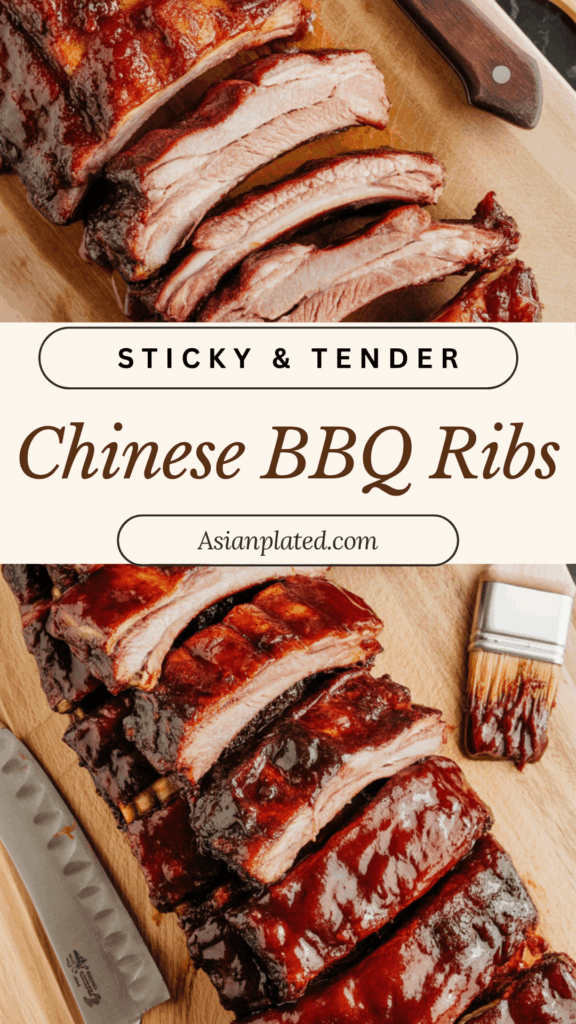
Real-Life Tips from My Kitchen
- Foil wrap is your friend: Sealing the ribs tightly keeps all the juices in and steams them gently. If your foil isn’t snug, double wrap—trust me, it’s worth it.
- Don’t skip the final glaze: That last coat of sauce + blast of high heat = magic. It’s what gives you that signature glossy finish.
- Leftover sauce? Don’t waste it: Warm it slightly and use it as a dip, or toss it with roasted veggies or stir-fried noodles.
- Make it spicy: Sometimes I stir a spoonful of chili crisp into the glaze if I’m in the mood for heat.
Make It Ahead (Yes, You Can)
These ribs are a dream to make ahead. I’ve done it plenty of times before family gatherings when I didn’t want to be stuck in the kitchen while everyone else was hanging out.
- Roast them fully with the foil wrap stage, then store them (still wrapped) in the fridge.
- When ready to serve, bring them to room temp, brush with sauce, and pop into a hot oven for that final glaze.
- You’ll get all the tenderness with fresh-off-the-oven crispness—without the stress.
How to Serve Them
We’ve served these ribs on everything from bamboo chopping boards to casual paper plates at backyard parties. Here’s how I like to round out the meal:
- With rice or fried rice: The sticky sauce begs for something to soak into.
- With a side of pickled veggies: A quick cucumber salad or pickled daikon balances the richness.
- Tucked into bao or sliders: Leftover rib meat in a steamed bun with some hoisin and slaw? Unreal.
Sometimes I’ll even shred them up and toss them into fried noodles the next day. Total flavor bomb.
Storing Leftovers (If You’re Lucky)
If you do manage to have leftovers, here’s how to keep them tasting great:
- Fridge: Store in an airtight container for up to 3 days. I like to brush on a little extra sauce before refrigerating to keep things moist.
- Freezer: Wrap tightly in foil and store in a freezer-safe bag. They’ll keep for about a month.
- Reheat: Oven is best—cover with foil and warm at 300°F until heated through. Microwave works too, but you might lose that sticky finish.
Quick Q&A
Can I make these ribs spicy?
Absolutely. Add chili flakes, sambal oelek, or even chili oil to the sauce. I sometimes brush half with spicy glaze and leave half sweet when cooking for guests.
What if I don’t have Chinese five spice?
A combo of cinnamon, star anise, and a tiny pinch of clove will get you close. It’s the five spice that gives that nostalgic Chinese BBQ flavor, so use it if you can.
Can I use this method with beef ribs?
You sure can. Just know that beef ribs usually take longer, and they have a deeper flavor. I’d adjust the roasting time and add a little extra sauce to keep things juicy.
A Recipe Worth Getting Messy For
This isn’t the kind of dish you eat with a fork and knife. It’s roll-up-your-sleeves, sauce-on-your-fingers, grin-on-your-face kind of food. I’ve made this for holidays, birthdays, rainy Sundays, and even just because the ribs looked good at the store.
Chinese BBQ Ribs
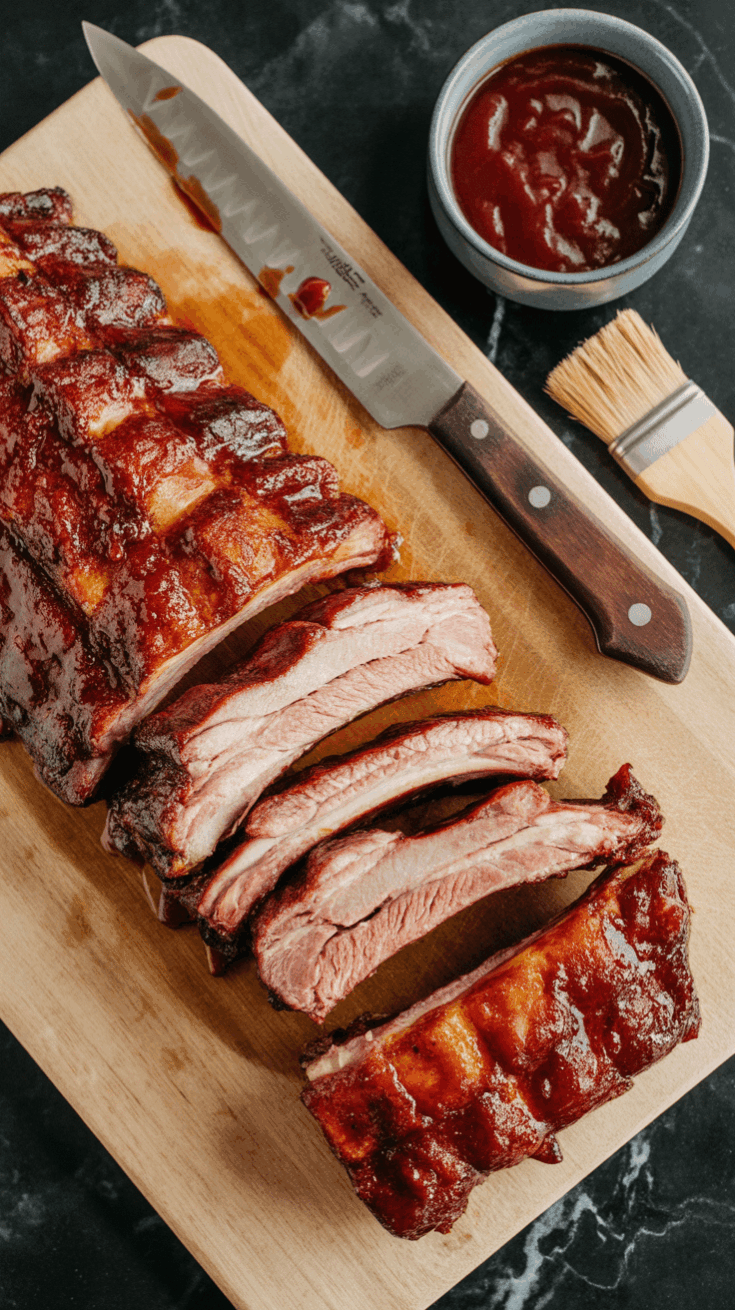
Looking to impress with something a little different from the usual? These Chinese BBQ Ribs are glazed to perfection, fall-off-the-bone tender, and deeply flavorful with sweet, smoky, and savory notes.
Ingredients
For the Ribs:
- 1 rack pork ribs (2.5 to 4 lbs), ideally around 3 lbs
- 1/2 tablespoon salt
- 1 1/2 teaspoons gochugaru (Korean chili powder) or any mild chili powder
- 1/2 teaspoon ground white pepper
- 1/2 teaspoon Chinese five spice powder
For the Sauce:
- 2 tablespoons hoisin sauce
- 2 tablespoons oyster sauce
- 3 tablespoons brown sugar
- 2 tablespoons honey
- 1 tablespoon soy sauce
- 2 teaspoons Shaoxing wine (or dry sherry)
- 2 teaspoons rice vinegar
- 1 teaspoon salt
- 1 teaspoon grated fresh ginger
- 1 garlic clove, grated
- 1/2 teaspoon five spice powder
- 6–10 drops red food coloring (optional, for a vibrant red hue)
Instructions
- Prep the ribs: If you prefer, start by removing the membrane from the back of the ribs for a more tender result. Use a knife to loosen one edge, then peel it off with your hands.
- Season the ribs: In a small bowl, mix together the salt, chili powder, white pepper, and five spice. Lay the ribs meat-side down on a large sheet of foil. Rub half of the seasoning mixture onto the back of the ribs, flip them over, and rub in the rest on the meat side. Let them sit at room temperature while your oven preheats to 275°F (135°C).
- Make the glaze: In a medium bowl, stir together the hoisin, oyster sauce, brown sugar, honey, soy sauce, Shaoxing wine, vinegar, salt, ginger, garlic, five spice, and optional food coloring until smooth.
- Bake low and slow: Brush a thin layer of the sauce all over the ribs. Cover with another sheet of foil and tightly seal the edges to create a packet. Transfer to a baking sheet and bake for 2 to 3 hours, depending on the weight of your ribs. They should be very tender when done—poke with a fork to test or check that the internal temp reaches at least 160°F (71°C).
- Finish with a high-heat roast: Once tender, remove the ribs from the oven and turn the heat up to 450°F (230°C). Carefully lift the ribs out of the foil and place them on a rack set over a foil-lined baking sheet.
- Glaze and caramelize: Brush the ribs generously with the sauce (reserve a few spoonfuls for serving). Roast uncovered for 10 to 15 minutes, checking every 5 minutes to prevent burning, until the surface starts to caramelize and char slightly.
- Rest and serve: Let the ribs rest for 10 minutes before slicing between the bones. Serve warm, brushed with the remaining sauce.
Nutrition Information:
Yield: 6 Serving Size: 1Amount Per Serving: Calories: 883Total Fat: 70gSaturated Fat: 21gTrans Fat: 1gUnsaturated Fat: 31gCholesterol: 238mgSodium: 1519mgCarbohydrates: 15gFiber: 1gSugar: 13gProtein: 48g
Asianplated.com, occasionally offers nutritional information for recipes contained on this site. This information is provided as a courtesy and is an estimate only. This information comes from online calculators. Although allchickenrecipes.com attempts to provide accurate nutritional information, these figures are only estimates.
Try other Chinese recipes:

